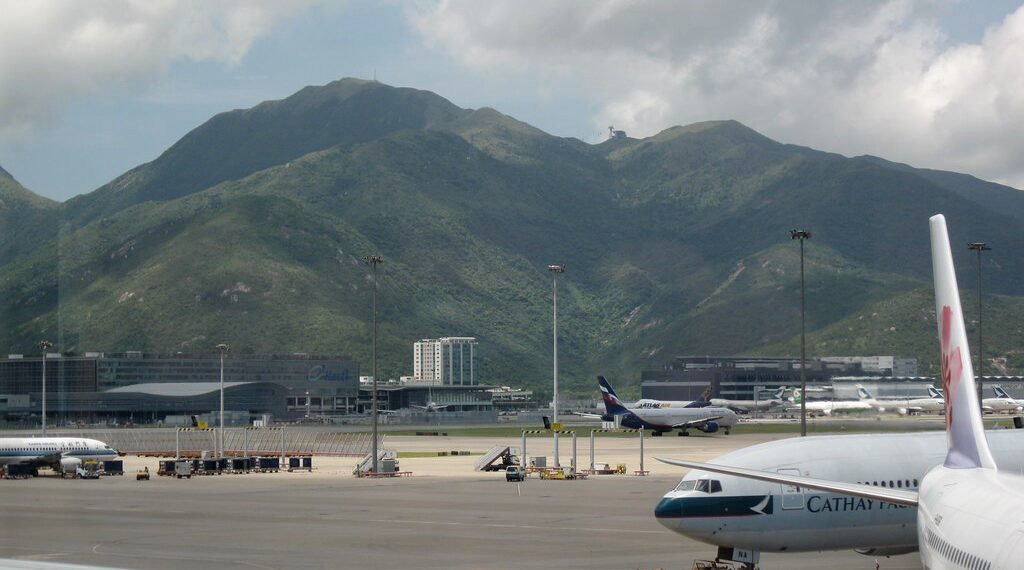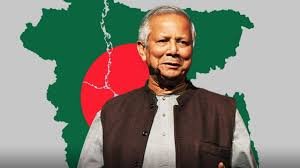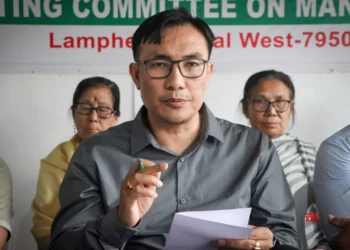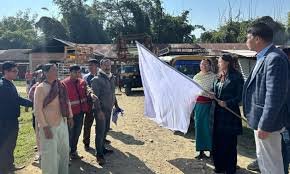A Greenfield Airport in Manipur’s remote regions could revolutionize trade, healthcare, education, and tourism—paving the way for inclusive development in the Northeast.
BY PC Bureau
In a bid to transform the socio-economic landscape of Manipur’s remote hill districts, L.M. Khaute, Member of the Manipur Legislative Assembly representing Churachandpur, has written to the GMR Group—one of India’s leading infrastructure developers—requesting the establishment of a Greenfield Airport to address the region’s long-standing connectivity crisis.
Khaute, a retired IPS officer and former Director General of Police, emphasized in his detailed appeal to GBS Raju, Business Chairman of GMR Airports, that the hill districts of Manipur have remained largely disconnected from mainstream development due to insufficient air and surface connectivity. His letter, dated March 30, 2025, advocates for a transformative intervention that could finally bring the hill districts into the national economic and developmental fold.

Speaking not only as an elected representative but also as someone who has dedicated decades to public service, Khaute underscored the urgency of the issue. “I have seen firsthand how connectivity—whether physical, economic, or social—can transform lives,” he wrote, adding that the hill districts of Manipur remain among the least connected parts of the country.
“Many in the hill districts find it difficult to access even the state capital, Imphal,” the MLA noted. “As a result, a captive population of nearly 20 lakh people is unable to benefit from the services and opportunities available in urban centers—education, healthcare, jobs, or trade.”
Khaute’s appeal comes at a time when the demand for air travel across India is surging. Citing publicly available data, he highlighted that air travel penetration in the northeast stood at approximately ₹1,11,853 in 2022–23, with a compound annual growth rate (CAGR) of 12.05% since 2006–07. Despite this growth, the people of Manipur’s hill districts have remained isolated due to lack of infrastructure.
ALSO READ: Manipur: Village Attack Sparks Outcry Over Administrative Bias and Land Dispute
A Greenfield Airport is a new airport built from scratch on undeveloped land, typically outside the city limits. The Ministry of Civil Aviation’s Greenfield Airport Policy enables such projects in regions where existing infrastructure is insufficient and where new airports can help bridge critical connectivity gaps. Khaute’s proposal aligns directly with this national policy.
Khaute’s proposal outlines several core objectives and potential benefits that a Greenfield Airport could unlock for Manipur’s hill districts:
1. Tourism Promotion
The hill districts of Manipur boast rich cultural diversity, natural beauty, and eco-tourism potential. However, due to inaccessibility, they remain largely unexplored. A new airport would provide a gateway for tourists, boosting local employment and allied sectors like hospitality, transportation, and handicrafts.
ALSO READ: Shrine to Schism: Lord Koubru Caught in Manipur’s Crossfire
2. Trade and Industrial Development
Manipur’s hill districts are home to high-value agricultural products, indigenous goods, and skilled craftspeople. A well-connected airport could serve as a hub for cargo operations, enhancing access to national and international markets, and contributing to India’s “Act East” Policy, which seeks deeper economic integration with Southeast Asia.
3. Healthcare Access
Residents currently travel to distant cities such as Guwahati, Kolkata, Chennai, and Delhi for specialized medical treatment. Travel is not only expensive but also time-consuming and sometimes impractical during emergencies. An airport would dramatically improve medical accessibility and patient outcomes.
4. Educational and Skill Development
Thousands of students from the hill districts migrate to metro cities for higher education. Limited connectivity not only inflates costs but also deters many from pursuing further studies. Air connectivity could make education more accessible and support the region’s human capital growth.
5. National Security and Strategic Significance
Manipur, bordering Myanmar, holds strategic importance. Enhanced connectivity can bolster national security by improving the deployment and mobility of resources in times of crisis. It would also facilitate faster logistics for defense and emergency response.
6. Boosting Private Sector Investment
Poor connectivity has long discouraged private investment in the hill districts. An airport could be a game-changer, making the region more attractive to businesses, start-ups, and entrepreneurs, thereby accelerating local economic growth.
A Call to GMR Group
Addressing the GMR Group, which operates major airports such as Delhi and Hyderabad, Khaute appealed for their involvement in this transformative venture.
“With your experience and expertise, this initiative could bring significant benefits to the region,” he wrote. “I would appreciate the opportunity to discuss this further and explore potential avenues for collaboration.”
The letter was also marked to Shri Grandhi Mallikarjuna Rao, Founder Chairperson of the GMR Group.
A Region on the Cusp of Transformation
Khaute’s letter comes at a pivotal time for Northeast India, as the central government continues to prioritize regional connectivity through initiatives like the UDAN (Ude Desh ka Aam Naagrik) scheme and the Act East Policy. The proposal for a Greenfield Airport aligns with the broader vision of inclusive development and equitable access to infrastructure across India’s diverse regions.
As one of the most under-connected regions in the country, Manipur’s hill districts could benefit enormously from such a project—bringing not just economic returns, but also social empowerment and dignity to communities that have long felt excluded.
If realized, the Greenfield Airport would be more than just a transportation hub—it would symbolize hope, opportunity, and a new chapter of integration for a region that has waited far too long at the margins of development.













